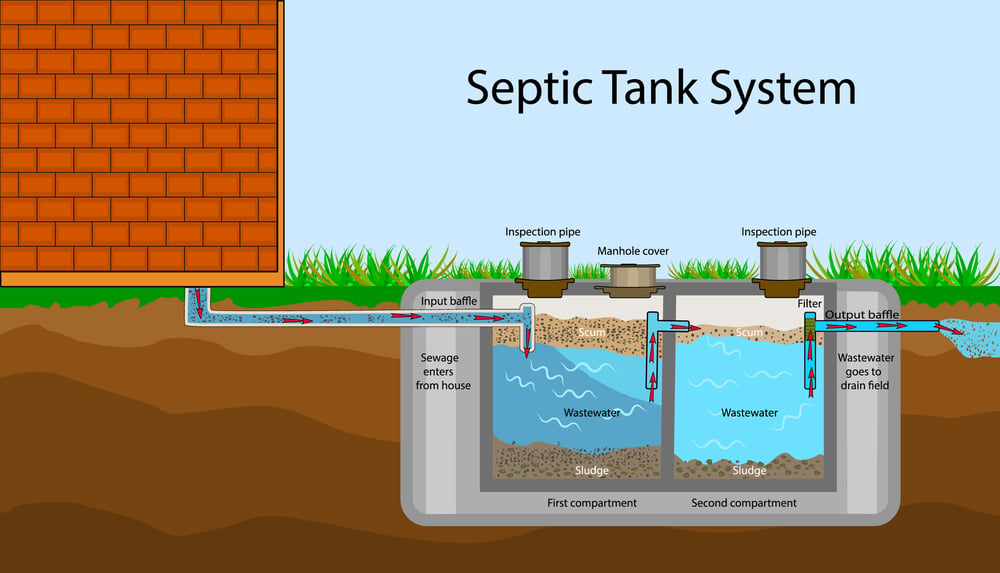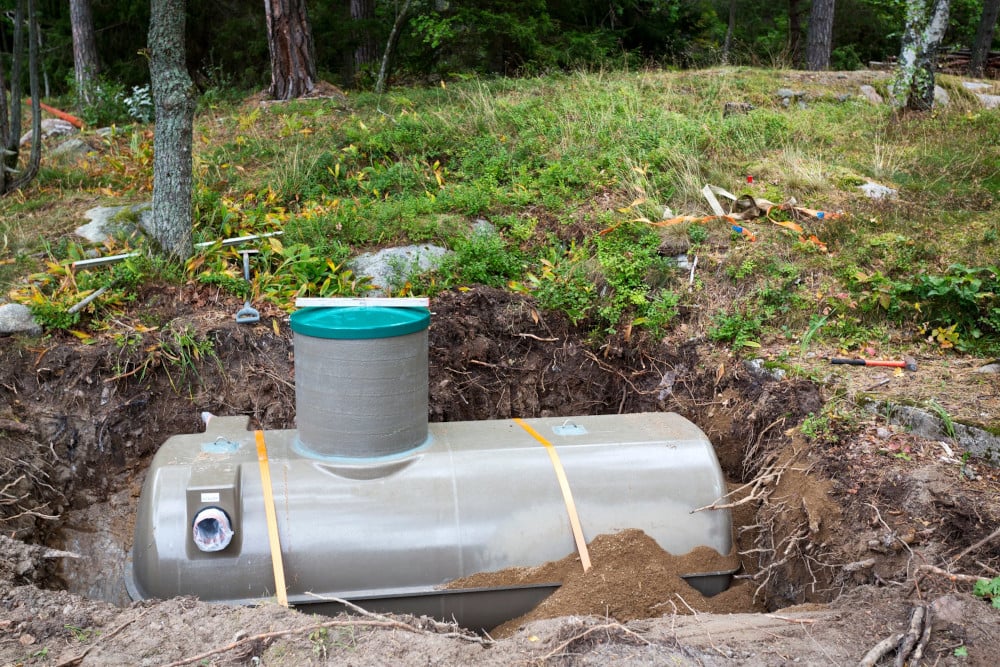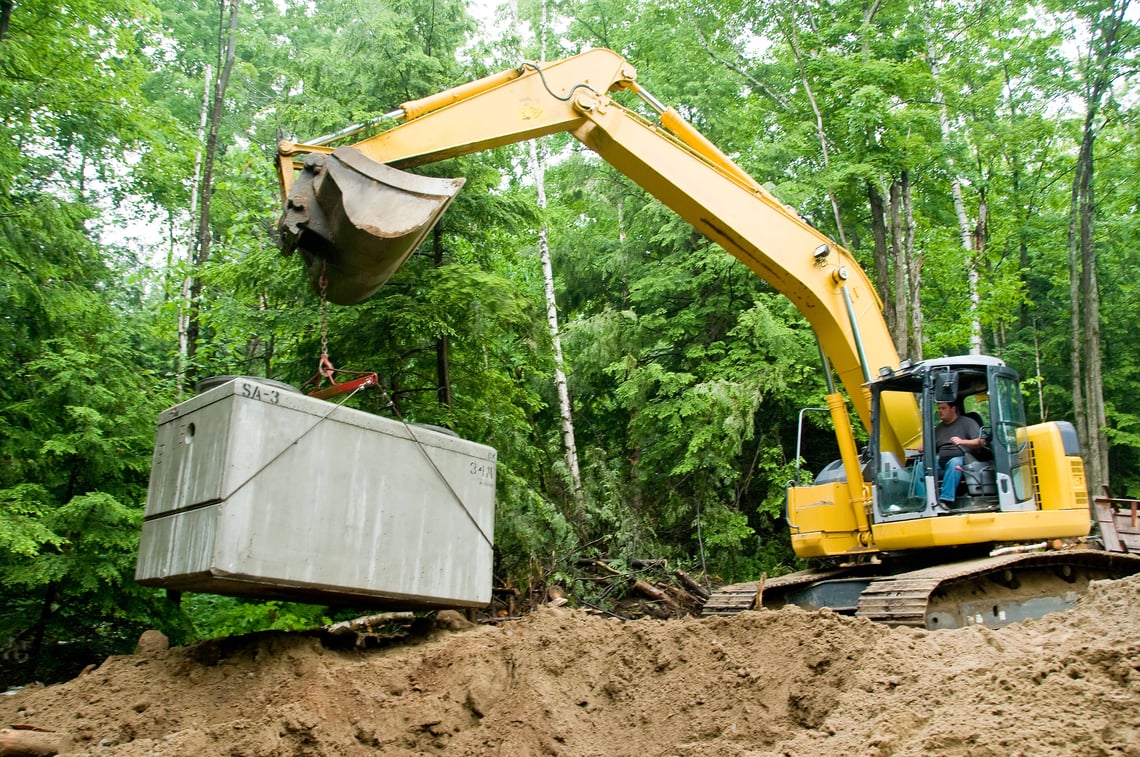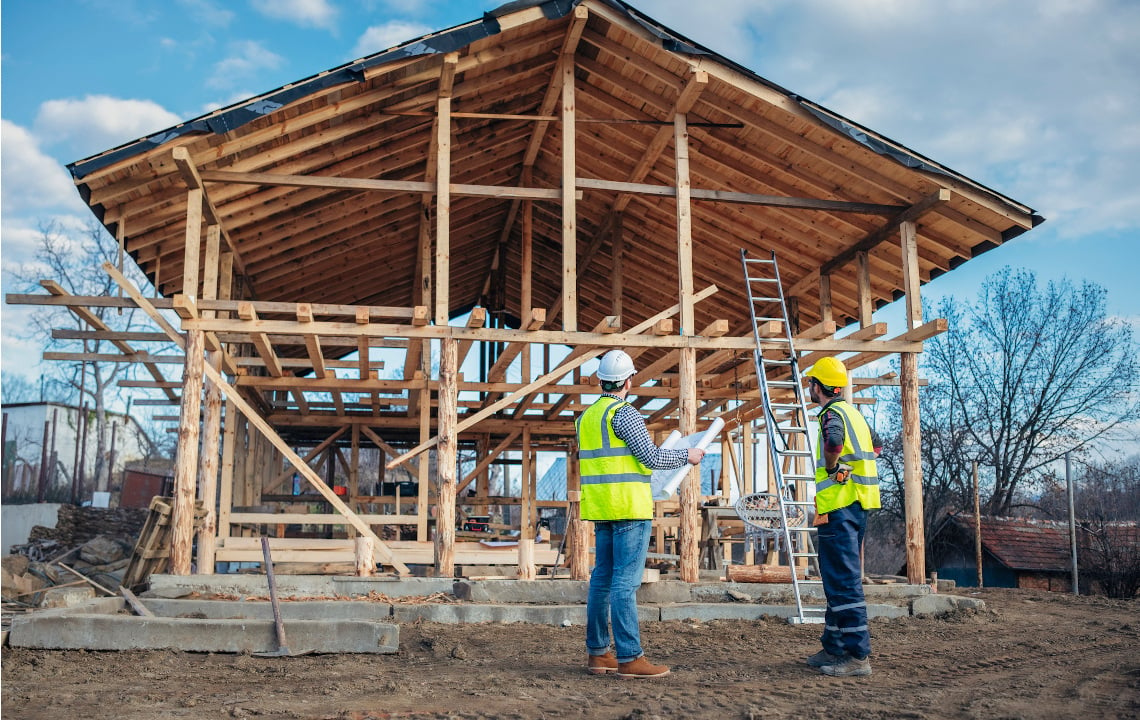Learning about septic systems can be overwhelming, especially if you've never owned one before. Here, we break down the nitty-gritty on installing and maintaining your homestead’s wastewater management system like a pro.
Lots of people like to daydream about rural life, about turning a piece of raw land into a treasured homestead. But not everyone has what it takes to go from daydream to reality. If you’re here, educating yourself on septic systems, you’re probably pretty serious about doing the hard work it takes to become a self-reliant country-dweller.
Even though the majority of land owners have a contractor handle the details of installation (recommended), it helps to know more about the system when it comes time to maintain it. As a standalone unit, your septic system will be your responsibility, and keeping it in good working order ensures the health of your family, your community, and the natural resources surrounding your home.
This article will explain the basic mechanics of septic systems, as well as some details on installation and, most importantly, the maintenance you’ll need to do as a homeowner.
Anatomy of a septic system

At its most basic, a septic system collects liquid and solid wastes from the home into a tank, separates and breaks down the wastes, and distributes liquid waste into a drain field to be broken down further so as to avoid contaminating surface and ground waters.
Conventional septic systems rely on gravity to move liquid and solid wastes into the tank from the home, where liquid waste then rises to the level of an outflow pipe, and moves into the drain field. Alternative systems break wastes down with oxygen rather than naturally-occuring bacteria, release cleaner water than conventional systems, and take up less land area. A third type of system, the engineered system, relies on a pump to send water into the drain field, and is used on sites with poor soil and steep slopes.
Site evaluation and permitting
To determine which type of system is appropriate for your home, you’ll need a site evaluation. The square footage of your house, the number of bedrooms and bathrooms it has, the topography of your site, as well as the soil type will dictate the appropriate system for your needs.
While a conventional system is suitable in many parts of the southeast, some areas have quite different local conditions. According to the Texas Commission on Environmental Quality, for example, most soils in Texas do not absorb wastewater pollutants as required in conventional systems, and alternative systems are needed in those areas.
To be absolutely sure, your contractor will need to have a site evaluation done by a licensed professional, local health department or other appropriate regulatory authority to determine the system’s requirements.
In addition to the site evaluation, most states require septic permits prior to installation, which are generally obtained through local permitting offices or environmental quality departments. These permits usually come with fees and paperwork requirements (such as copies of house plans) which vary by locality.
Installation and inspection

Septic systems are typically installed towards the end of the construction process, partially to prevent heavy machinery from driving over top of them, a mistake which can damage tanks, drain fields and sewer lines that are buried underground.
The total cost will depend on the type of system you need, materials used, local labor costs and permitting and inspection fees. ThisOldHouse.com quotes the average conventional system to be the least expensive at around $3,000, the alternative system at $12,000, and the engineered system at $8,000. However, systems can cost a lot more if your homesite is close to a creek or on/near a flood plain, for example.
Depending on the type of system your home needs, the tank may be made of fiberglass, plastic or concrete.
While plastic is the least expensive, it’s also the most prone to damage. Fiberglass and concrete hold up to the test of time, but are more expensive. ThisOldHouse.com quotes plastic tanks at $1,200, while concrete and fiberglass tanks come in around $2,000 each. While concrete is durable, it can be difficult to repair. And fiberglass has its quirks, too, such as a tendency to be displaced by rising water tables.
Make sure to thoroughly research and vet your installer through word-of-mouth referrals or third-party review websites to make sure they are competent to guide you in the right direction.
Before your tank can be buried, you’ll likely need an inspection from your local health department to make sure the system meets requirements. Expect another round of fees and paperwork, which varies by location (your contractor or installer should be able to estimate this for you).
Basic maintenance goes a long way
Pump it out every three to five years
The most important thing to remember is to have the septic tank pumped periodically (ideally every three to five years). HomeAdvisor.com quotes a range for these services from $285-$519, depending on your location and the size of the tank. Septic companies may also charge more for a rush or after-hours job, which can typically be avoided if you remember to pump your tank regularly.
When in doubt, pump it out! An advantage of having this done frequently is that you can have a technician examine your system to make sure it’s functioning optimally.
Know the contours and avoid driving over your system
As we mentioned above in the section on installation, it’s important that no heavy equipment drives across your system, including the drain field. Make sure you have a drawing of your system and know its contours before it is buried and you landscape over top of it.
Plant appropriately, avoiding anything with strong, deep roots
And speaking of landscaping, make sure your plantings are appropriate. We spoke with Karen Graham of All-American Septic Services, who says tree and shrub roots will grow right up to and into pipes, causing them to crack.
“Roots will get into all parts of the septic system especially the drain lines and cause problems. If you’ve got a tree nearby, even, and those roots are growing out-- tree roots are very strong and they can crack the plastic over time,” she said.
The University of Georgia’s Extension Department advises homeowners avoid planting vegetables and other edible plants on top of systems as there is risk of contamination.
No trash down the drain!
 Avoid dumping wipes, paper towels, hygiene products, coffee grounds, cooking grease, cigarette butts or other household trash down the drain. Using a system in this way can cause the lines to clog, and water to back up into sinks, toilets and other drains inside the home. At best, household waste accumulates quickly inside the tank and necessitates more frequent pumping.
Avoid dumping wipes, paper towels, hygiene products, coffee grounds, cooking grease, cigarette butts or other household trash down the drain. Using a system in this way can cause the lines to clog, and water to back up into sinks, toilets and other drains inside the home. At best, household waste accumulates quickly inside the tank and necessitates more frequent pumping.
Insofar as garbage disposal are concerned, they're somewhat controversial for septic systems. While there are garbage disposals specifically designed for septic systems many contractors recommend against using them...or at least against using them often as they can clog up your septic filter and fill up your tank faster. Plus, some systems just don't tolerate food scraps well so it's best to check with your contractor.
Be careful with water use
Because any water that goes down the drain must be absorbed in the septic system, be careful with water use, especially when the ground is already saturated. Consider spacing out your laundry loads, especially during rainy seasons and if you discover a leaky faucet or running toilet, do not wait to have it fixed. Excess water due to leaks can overwhelm a drain field and cause expensive damage faster than you'd think.
Keep an eye out for red flags
Even the best-maintained systems can have problems from time to time; they’re dynamic systems after all! Watch out for signs of failing systems and call in professionals to diagnose and repair.
Some things to look out for are: lush vegetation in one area of your yard, gurgling sounds in your pipes or toilets, plumbing back-ups in the house, sewage odors and bacteria in well water.
Septic repairs can be costly, and in some states, like Texas, system malfunctions neglected by homeowners can be cited as minor criminal offenses. The damage to ground and surface waters as well as neighbors’ properties can be significant.
Make sure you keep an eye out for red flags and respond quickly to any problems you see.
Sources:
UGA Extension Department https://extension.uga.edu/publications/detail.html?number=B1421&title=A%20Beginner%27s%20Guide%20to%20Septic%20Systems
Texas Environmental Quality https://www.tceq.texas.gov/assistance/water/fyiossfs.html
This Old House https://www.thisoldhouse.com/plumbing/21303066/septic-tank-installation

























